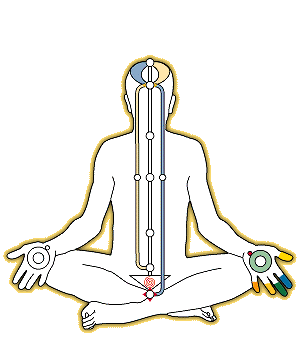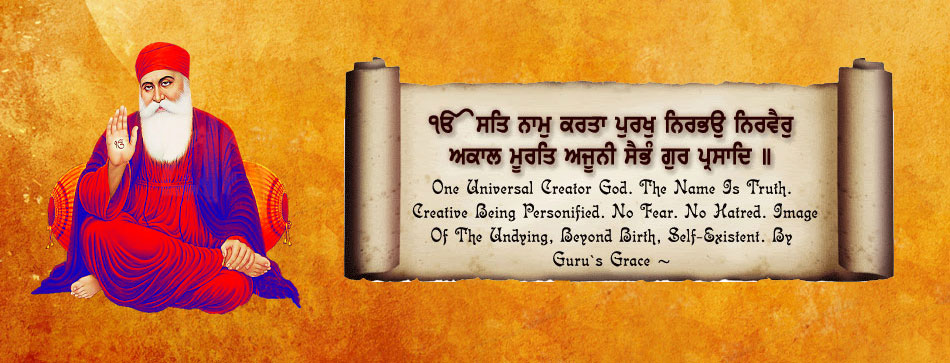Fruits and Vegetables..
- 2013-12-31
- By
- Posted in Nutritions
Fruits and vegetables are one of the tried and true recommendations for a healthy diet. And for good reason. Fruits and vegetables are rich in essential vitamins and minerals, fiber, carbohydrates, and phytochemicals. They’ve also been linked to many health benefits, including lowered risk for certain cancers, stroke, heart disease, and high blood pressure.
1. Apples – “An apple a day could very well keep the doctor away,” says Chang Y. Lee, a food chemist at the New York State Agricultural Experiment Station in Geneva, NY. “The fact is, most Americans barely eat one apple a week.”
Apples contain naturally-occurring chemical compounds known as phytochemicals, polyphenols, or flavonoids, some of which have been proven to have antioxidant activity that inhibits, or scavenges, the activity of free radicals in the body. Cell damage from free radicals can be a factor in certain cancers, heart disease, strokes, and other conditions. The major antioxidant components in apples are polyphenols contained mainly in the skin known as quercetin glycoside, phloretin glycoside, chlorogenic acid, and epicatechin. The names are complex, but their health value is clear: Quercetin has been reported to reduce carcinogenic activity, inhibit enzymatic activities associated with several types of tumor cells, enhance the antiproliferative activity of anticancer agents, and inhibit the growth of transformed tumorigenic cells.
2. Blackberries, Blueberries, Raspberries, Strawberries – Antioxidant compounds found in blueberries, sweet cherries, strawberries and blackberries may fight arterial disease by preventing the oxidation of LDL (‘bad’) cholesterol, according to a team of researchers at the University of California, Davis. In studies conducted at the University, Dr. I. Marina Heinonen, a visiting scientist from the University of Helsinki in Finland, and colleagues extracted antioxidant compounds from blackberries, red raspberries, sweet cherries, blueberries and strawberries. In a series of experiments in laboratory culture dishes, they found that blackberries and Blueberries are of particular interest because of their high antioxidant capacity. They had the most antioxidant activity in one experiment and sweet cherries in another.
3. Bitter Melon, Cantaloupe, Honeydew Melon, Kiwi- Melons are widely available and grown in many parts of the world. In ancient Egypt, watermelons were traditionally offered to thirsty travelers, and they are still important today in times of drought or water pollution. Aromatic melon varieties were prized from early times in the Middle East. Melons are related to cucumbers, pumpkin, squash, and gourds, growing as they all do on long, trailing vines. These fruits which are full of antioxidants are often served for breakfast, as an appetizer, dessert, or snack. Larger melons are sliced in serving-size portions; smaller melons are typically cut in half and the pulp and seeds are scooped out before serving. Depending on their size, melons can be served in their skins, halved or cut in wedges, or peeled for used in salads or appetizers. The flesh can also be cut into cubes or scooped into balls with a melon-baller.
4. Citrus Fruits – Hundreds of studies have been conducted on the nutrients found in citrus fruit, including orange juice, and the role these nutrients play in reducing the risk of such diseases as cancer and heart disease, when part of a low fat diet rich in fruits and vegetables. Citrus fruit, which contain essential vitamins and minerals, are an important part of a healthy diet for all men, women and children. In both fresh and juice form, citrus – including oranges, grapefruit and specialty varieties such a temple oranges, tangerines and tangelos – have many important nutritional benefits.
5. Oranges and Grapefruit- contain dietary fiber, including soluble fiber. Fiber helps in digestion and elimination, and, when part of a low fat diet rich in fruits and vegetables, may help reduce the risk of some cancers. Folate, a B vitamin commonly found in orange juice and green leafy vegetables, has been shown to help reduce the risk of certain types of birth defects. An eight-ounce glass of orange juice supplies 100 percent or more of the Daily Value for vitamin C. Citrus juices like orange juice are natural sources of potassium, and all citrus fruit are sodium and cholesterol-free.
6. Peaches, Pears, Plums – Peaches contain phytochemicals – chemical compounds produced by plants – that are important for healthy skin. Phytochemicals act as antioxidants that are critical to maintaining healthy skin. Peaches are also good sources of powerful antioxidants that, according to experts, may hold the secret to long life and vitality. Pears are a good source of fiber. Just one medium pear has 16% of the fiber our bodies need everyday for good health. Fiber helps our bodies with digestion and adds bulk to our diet. Plums are high in carbohydrates and are an excellent source of vitamin A, calcium, magnesium, iron, potassium and fiber and stimulate the bowel movement. Plums contain a substantial amount of vitamin C. Dried plums contain iron, potassium, vitamin A, magnesium and fiber. They are also high in antioxidants which help neutralize the damaging effects of oxidation on the ageing process, protect against certain cancers, heart & lung diseases and cataract formation.
7. Apsaragus – Asparagus is spring’s most luxurious vegetable. It was once cultivated for medicinal purposes as a natural remedy for blood cleansing and diuretic properties. Asparagus is rich in immunity-enhancing antioxidants and vitamins. Asparagus can be processed into juice and other products to increase total utilization and increase net value. Asparagus juice contains antioxidants, such as rutin, ferulic acid and ascorbic acid. When buying asparagus look for compact tips and smooth green stems that are uniform in color down the length of the stem. Check the cut stem end for drying and avoid withered spears. Asparagus is low in calories and provides substantial amounts of antioxidants – Vitamins A and C. It truly shines as a source of folate and has a goodly amount of fiber.
8. Beans – People who pay attention to the colors of the foods they cook and serve are enhancing not only visual and gustatory pleasure, but nutritional punch as well. These foods contain colored pigments with nutritious cancer- and heart-disease-fighting compounds called flavonoids. Agricultural Research Service food quality geneticist and plant breeder George L. Hosfield has found these flavonoids in bean seed coats, which is where bean colors are also found. Certainly beans come in a mosaic of colors that can rival those of fruits and vegetables—from the plain white great northern and navy beans, to the mottled brownish pink pintos, to the cranberry bean’s cream color with red streaks and flecks, the light and dark reds of kidney beans, the maroon-red adzuki, delicious green beans all the way to the black bean. The seed coat, which is 10 percent of the bean, is not only high in antioxidants for some beans, but is also where the high fiber content of beans comes into play.
9. Broccoli – Broccoli is known as the “Crown Jewel of Nutrition” for its vitamin-rich, high in fiber, and low in calorie properties. Not only does broccoli give you the best vegetable nutrition available, it also gives you many ways to lead a healthier, longer life. Heart disease is the number one cause of death in the United States with cancer as the second, and broccoli gives you many ways to help fight and prevent these and other diseases. Broccoli has multiple cancer-fighting properties including vitamin C, beta carotene, and fiber. It is also rich of phytochemicals which appear to offer us protection against certain cancers and heart disease. Indole carbinol and sulforaphane are two different phytochemicals that are found in broccoli.
10. Cabbage, Cauliflower – Nutritionally and medicinally, the cauliflower is similar to the cabbage. Of course, the lower sulphur content is obvious. Cabbage and cauliflower are rich in antioxidants, which help prevent cancer, and prevent heart disease caused by oxidative damage to blood vessels. It is especially rich in Vitamin C – one cup of chopped flowerets or laces of cabbage meets a whole day’s requirement of this vitamin. A deficiency of Vitamin C causes scurvy because it interferes with collagen synthesis. Collagen is one of the structural frameworks of normal tissues. Other anti-cancer molecules present in significant amounts included the phytochemicals sulforaphane and indole-3-carbinol.
11. Leafy Greens, Spinach- Leaf lettuce, beet greens, and spinach are just the tip of the iceberg when it comes to these salad vegetables. Greens actually come in a wide variety of colors, textures, shapes, and flavors. They may be green to yellow-white, or red to purple, soft to crisp, curly to flat, and peppery to bitter to mild. Mix and match them and you’ve created an exciting salad! Greens are an excellent source of vitamin A and a good source of vitamin C. For a bigger boost of vitamin A, buy greens that are medium to dark green (the darker the leaves, the more vitamin A). Many greens, such as spinach, kale, and collards are known for their mineral content, especially iron, calcium, magnesium-as well as the vitamins folate, riboflavin (B2) and vitamin K. Leaves are very rich in antioxidants– the carotenoids and beta-carotene, the tocopherols (vitamin E) and of course, vitamin C.
12. Black and Green Tea – For years, studies have indicated that the antioxidants in green tea offer protection against diseases, including cancer, and even fight dental cavities. One of the most beneficial of these antioxidants is called epigallocatechin gallate (EGCG). According to the University of California Wellness Letter, Mar 2002, regular black tea is turning out to be just as healthful as green tea. The evidence for tea’s health effects comes mainly from lab studies, though some human studies point to possible benefits in preventing heart disease and cancer. EGCG, inhibited an enzyme that cancer cells need in order to grow. The cancer cells that couldn’t grow big enough to divide self-destructed. It would take about 4-10 cups of green tea a day to get the blood levels of EGCG that inhibited cancer in the study. Black tea also contains EGCG, but at lower concentrations.
Rising Kundilini

Thoughts
Blissful Music
3D Live Visitors Stats
Visitor Locations
Join Me

Calender
| M | T | W | T | F | S | S |
|---|---|---|---|---|---|---|
| 1 | 2 | 3 | 4 | 5 | 6 | 7 |
| 8 | 9 | 10 | 11 | 12 | 13 | 14 |
| 15 | 16 | 17 | 18 | 19 | 20 | 21 |
| 22 | 23 | 24 | 25 | 26 | 27 | 28 |
| 29 | 30 | |||||



























